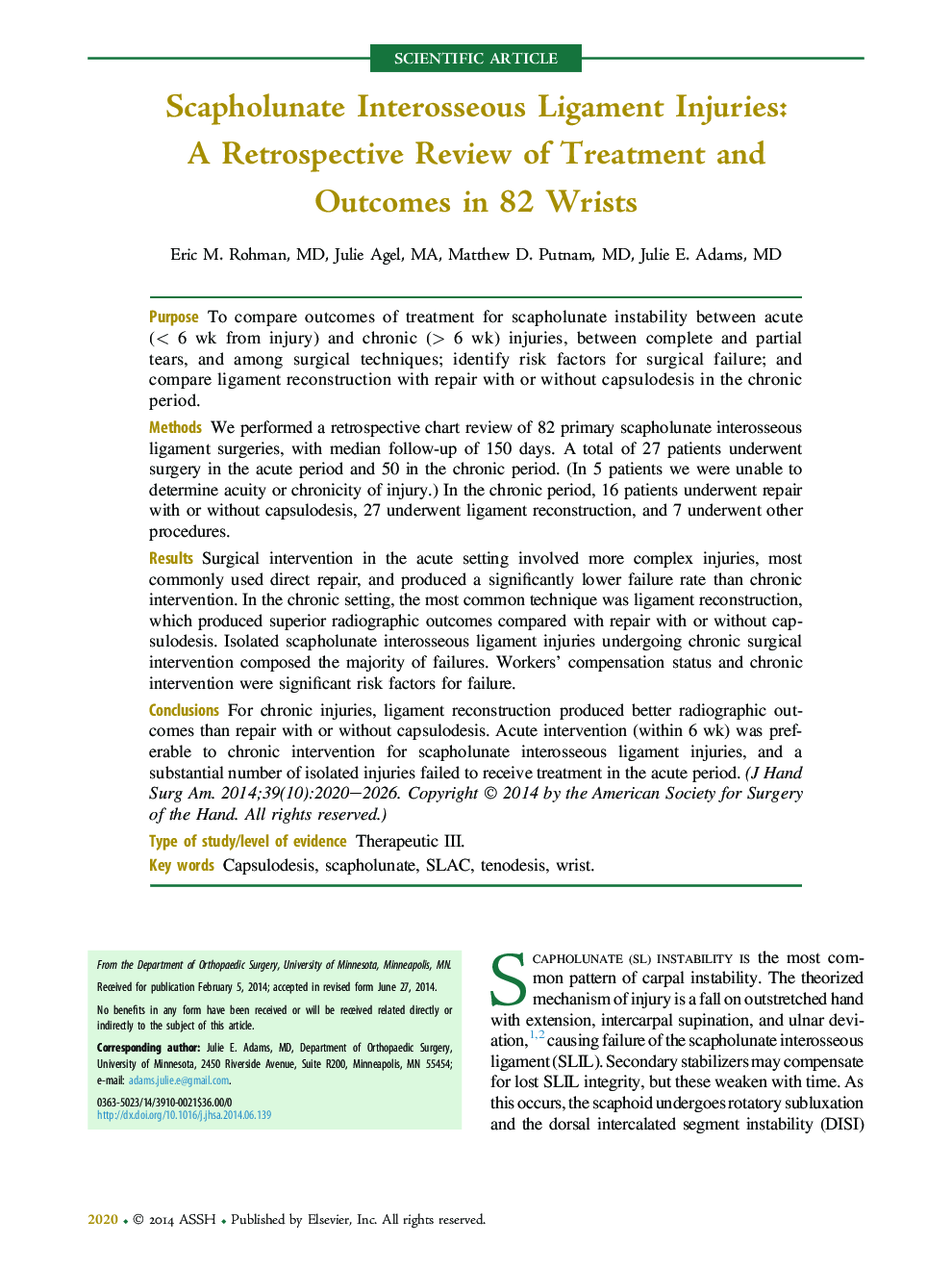| Article ID | Journal | Published Year | Pages | File Type |
|---|---|---|---|---|
| 4067050 | The Journal of Hand Surgery | 2014 | 7 Pages |
PurposeTo compare outcomes of treatment for scapholunate instability between acute (< 6 wk from injury) and chronic (> 6 wk) injuries, between complete and partial tears, and among surgical techniques; identify risk factors for surgical failure; and compare ligament reconstruction with repair with or without capsulodesis in the chronic period.MethodsWe performed a retrospective chart review of 82 primary scapholunate interosseous ligament surgeries, with median follow-up of 150 days. A total of 27 patients underwent surgery in the acute period and 50 in the chronic period. (In 5 patients we were unable to determine acuity or chronicity of injury.) In the chronic period, 16 patients underwent repair with or without capsulodesis, 27 underwent ligament reconstruction, and 7 underwent other procedures.ResultsSurgical intervention in the acute setting involved more complex injuries, most commonly used direct repair, and produced a significantly lower failure rate than chronic intervention. In the chronic setting, the most common technique was ligament reconstruction, which produced superior radiographic outcomes compared with repair with or without capsulodesis. Isolated scapholunate interosseous ligament injuries undergoing chronic surgical intervention composed the majority of failures. Workers’ compensation status and chronic intervention were significant risk factors for failure.ConclusionsFor chronic injuries, ligament reconstruction produced better radiographic outcomes than repair with or without capsulodesis. Acute intervention (within 6 wk) was preferable to chronic intervention for scapholunate interosseous ligament injuries, and a substantial number of isolated injuries failed to receive treatment in the acute period.Type of study/level of evidenceTherapeutic III.
